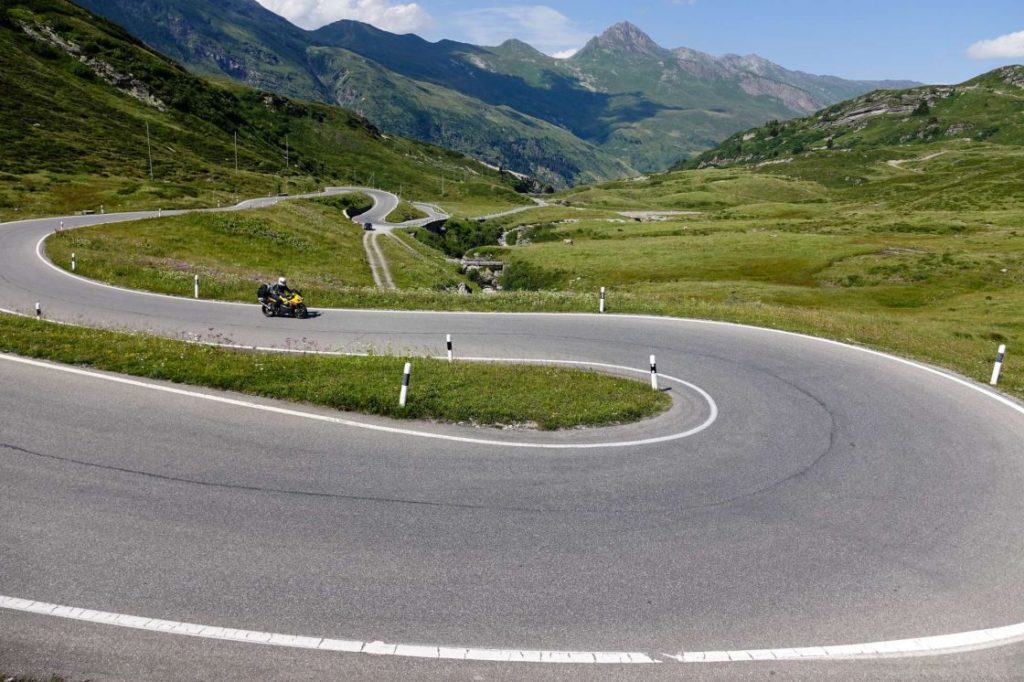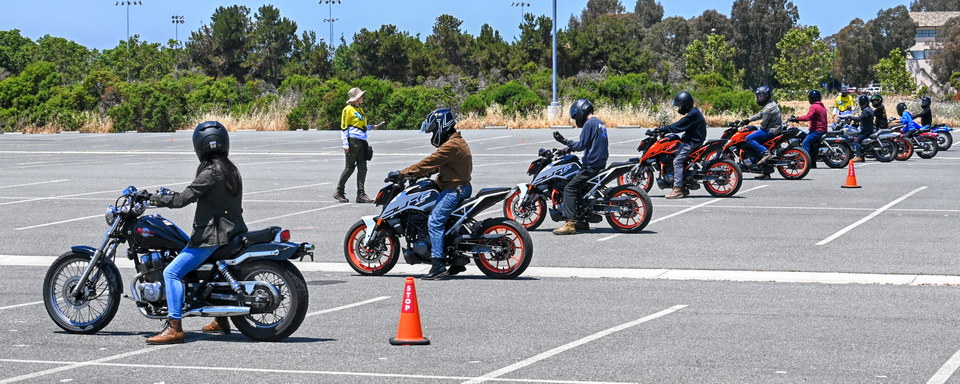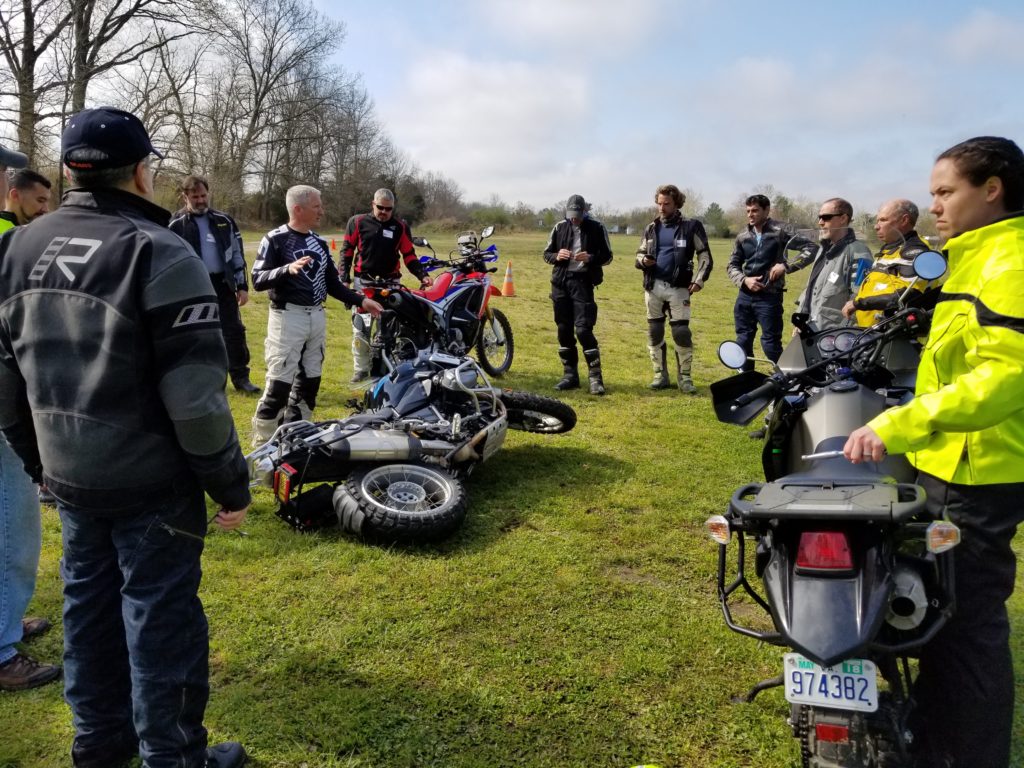While you will be eligible to get your license after passing the BRC, please remember that the goal of the Basic Rider Course is to help you learn the basic fundamentals of motorcycle riding. There’s no way you can become a proficient street rider after just two days of riding around in a parking lot, so your first step should be to continue practicing and refining the skills you learned to build confidence and muscle memory before venturing into traffic. All of the defensive riding strategies we talked about in class only work if you have mental capacity to scan traffic and respond smoothly. If you’re still struggling to coordinate your control of the motorcycle you won’t have the mental bandwidth to anticipate traffic.
I have a separate post on choosing your first bike, but please be thoughtful and remember that you want your bike(s) to progress with you — a smaller, lighter, less powerful bike will be much more forgiving of mistakes and provide a better learning experience. You’ll also forgive yourself easier if you drop a cheap beater than your dream bike.
First Steps
- When you buy your first bike, consider having a friend or family member you trust ride it home for you. If you don’t know anyone else who rides consider loading it into a truck, trailer, or van (all of which you can rent pretty cheaply for an afternoon).
- Start off trying to reproduce some of the BRC exercises in a parking lot. You can use the lines of the parking stalls or cut tennis balls in half to act as cones. If you have someone in your life who rides, ask them to come with you and give you feedback. You can also record yourself riding and look for areas of improvement.
- When you’re ready to head out onto public roads, start small. Choose quiet neighborhood streets if you can, as this will let you practice starting & stopping at stop signs and managing intersections without the pressure of heavy traffic.
- As you get more comfortable and build your skills start to take longer rides on busier streets. This will take more mental focus, so pay attention to your fatigue levels and take plenty of breaks.
- Eventually you’ll know that you’re ready to start taking on your commute or longer day trips, just don’t rush it.
Make sure to practice intentionally and reflect on your riding. Don’t feel like you have to make every moment of every ride be about training, but find small ways to regularly incorporate intentional practice or drills. Some riders choose to practice specific skills at the beginning or end of every ride. Other riders like to set dedicated practice sessions on a piece of road they know well or a parking lot. Find what works for you, just try not to become complacent and take your skills for granted.
From here, try to define some goals and make a plan to achieve them. Always wanted to do a cross-country tour? Start taking longer day trips in New England then work up from there. Do you want to carve canyons in California or mountain passes in the Alps? Use a tool like Rever to find the best local twisties to hone your skills before taking your dream fly-and-ride vacation. Having a long-term goal in mind can give you motivation and a reason to get better.

Progressing your Skills
According to studies, the most dangerous times in the motorcycle learning curve are you first six months and months 25-36, where you are nearly twice as likely to crash than established riders (with 4+ years of experience). After about two years of experience, riders tend to get over-confident and that leads directly taking on dangerous risk offsets and learning hard lessons. This is a perfect time to take a hard look at your riding and make sure you’re not building any bad habits.
There tons of “experienced” riders who have been riding for years but haven’t progressed much beyond what we teach in the BRC. The Basic Rider Course is exactly that — it’s designed to give novice riders enough of a foundation to safely learn on their own. What we teach isn’t the only way to ride a motorcycle, it’s certainly not the fastest or most efficient way, and frankly it sometimes isn’t even the safest. It’s simply that it’s the safest way to start learning to ride. Any rider who is serious about becoming a better rider should look beyond the skills we teach in the BRC to hone their skills.
Self-Paced Training
Books, YouTube videos, and experienced riders can be a great place to learn more advanced riding strategies and skills. There’s a lot of bad advice out there, so make sure to start from a place of skepticism and make sure what you’re hearing/reading/watching is trustworthy. I have other posts that link to some good resources.
Using these methods can be great because you get to learn at your own pace. Watch a video or read a chapter on a technique, practice it statically on your own bike (just like we did in class), then try it out on a ride. Make sure that you’re reflecting on how well you were able to perform the technique as well as making sure that it fits into your riding style and risk appetite.
The downside of this strategy is that you don’t get professional, independent feedback on how well you’re doing or how you can improve. Remember that practice doesn’t make perfect, practice makes permanent.
Advanced Street Classes
The MSF sometimes gets a bad rap for not teaching advanced riding skills or not diving deeply enough into certain aspects of riding. Honestly, I used to be one of those MSF critics before I started down the path of becoming a RiderCoach. Remember that the BRC isn’t designed to produce advanced riders, it’s designed to take novices and produce beginners.

The MSF does, in fact, offer intermediate and advanced training classes that to beyond what we teach in the BRC. These courses mostly focus on street skills, but they do dive into topics like line choice, high-speed obstacle avoidance, and trail braking. Courses can be harder to find in CT, but we do have a few sites that offer them.
I linked to Lee Park’s book Total Control on my books post, and there is a corresponding training curriculum of the same name that teaches a more performance-oriented version of street skills (while still keeping safety strategies in mind). While Total Control is headquartered in California, you can also find classes in PA and other states.
Discipline-Focused Training
Track Schools
Track schools naturally focus on riding motorcycles fast in a closed-course environment. Riding fast in competitive conditions requires great line choice, smooth operation of controls, and managing traction and chassis stability at all times. Track techniques & strategies aren’t just useful on the track — those same skills applied at responsible speeds on public roads can buy you a lot of risk offset. Learning to ride at a faster pace can also have the simple effect of changing your perspective and make the street feel less scary.
Penguin Racing is a New England based organization offering training and rentals at several local tracks, but you can also consider a training vacation to attend something like the California Superbike School or Yamaha Champions Riding School (both of which are offered across the country).
Dirt Schools
Even if you’ve never considered riding off-pavement, a dirt training class can be a huge benefit for street riders. Riding in the dirt is all about getting the motorcycle over obstacles and riding in low-traction environments. These skills can come in handy if you find yourself staring down a gravel road on your street bike or when handling an unexpected situation. I can personally recommend Pine Barrens Adventure Camp in New Jersey, but there are a ton of other schools popping up all over the place.
